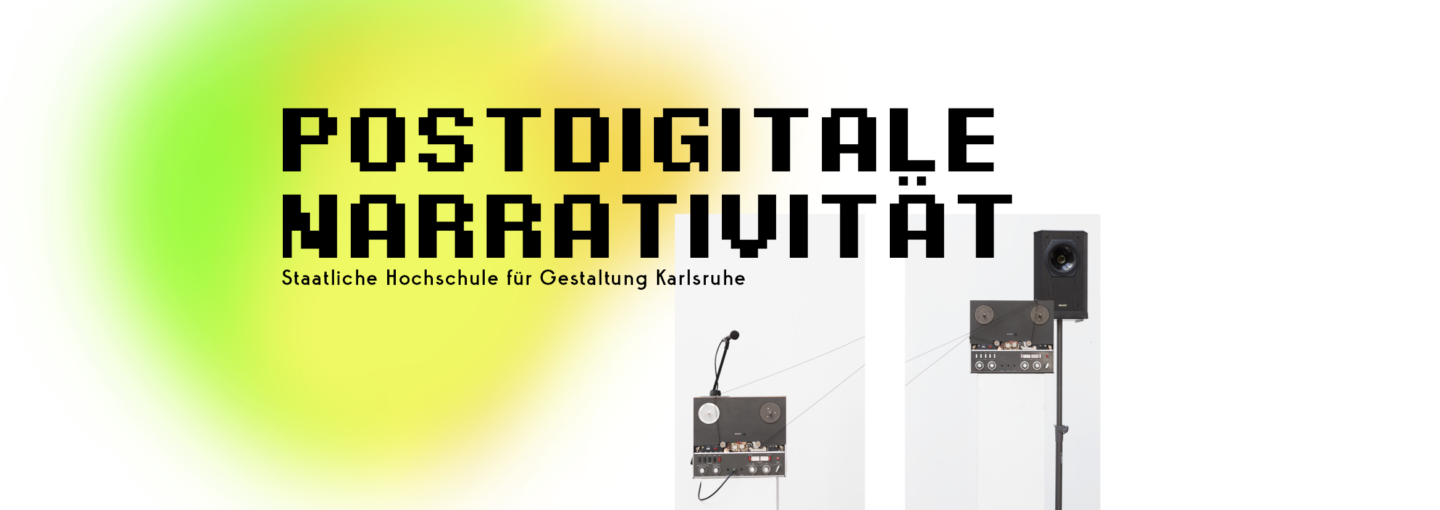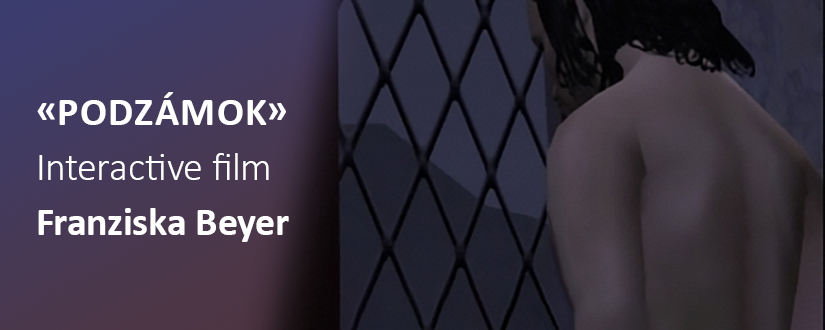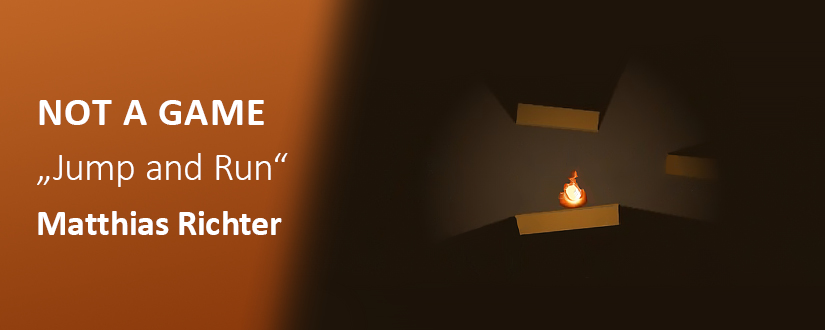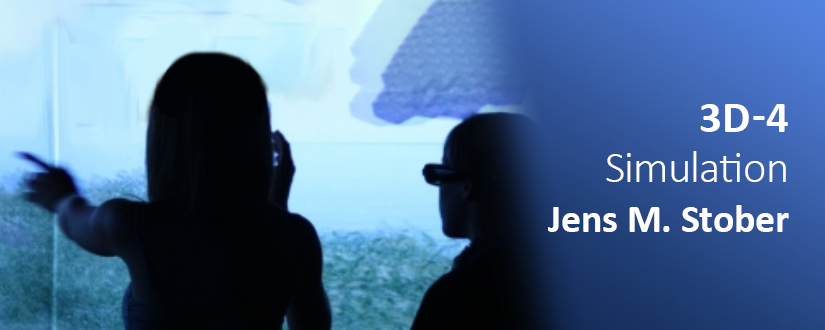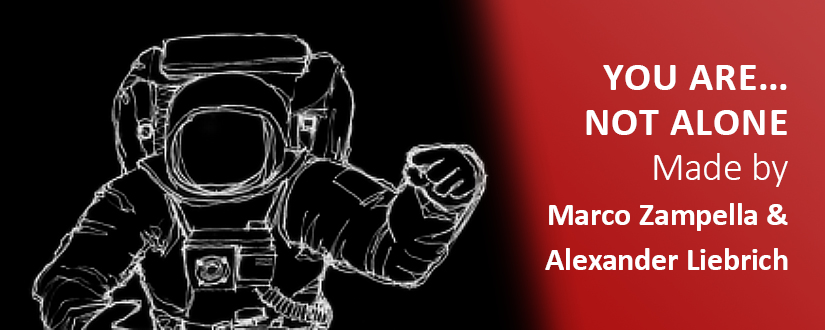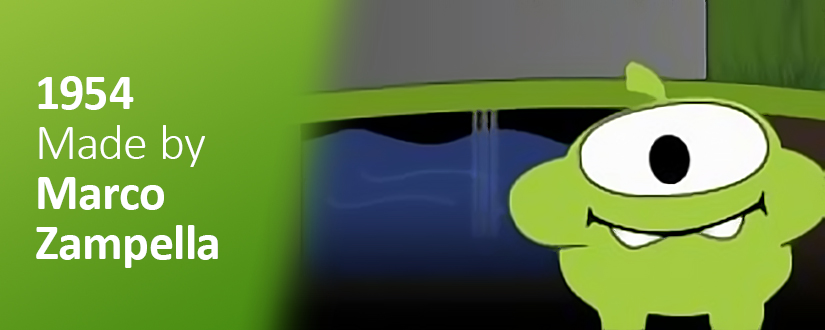« K. irrt durch die zahlreichen Vorhöfe eines ominösen Schlosses, wo er hofft vorgelassen und im Amt des Landvermessers bestätigt zu werden. Die Dorfbewohner begegnen ihm stets mit Misstrauen und Spott. Angesichts der Undurchschaubarkeit des Systems weicht K.s anfänglicher Ehrgeiz zunehmend einer ermüdenden Ohnmacht. »
« Podzámok » ist ein interaktiver Film, dessen Sequenzen ausschließlich im 3D-Game Die Sims 2 gefilmt wurden. Dass als « Machinima » bekannte Verfahren vereint Elemente aus Film, Computerspiel und Animation und ermöglicht zeit- und kosteneffiziente Produktionen. Als literarische Vorlage diente Franz Kafkas Romanfragment « Das Schloss » aus dem Jahr 1922. Der Titel zielt auf die berühmte Arwa-Burg (Oravský Podzámok) im Norden der Slowakei, wo Kafka vermutlich seinen Roman schrieb. Die Arbeit entstand 2010 an der Staatlichen Hochschule für Gestaltung Karlsruhe; damals als Installation auf DVD via einer PS2-Konsole, einem Game-Controller und einem Fernseher.
Der gesamte Film ist online spielbar:
http://www.youtube.com/watch?v=x7J8aEZKz1s&feature=player_embedded
Das Gamelab Karlsruhe ist außerdem mit «Podzámok» in der Ausstellung des zweiten Game Art Festivals der UCLA in Los Angeles vertreten. Im Rahmen der zweitägigen Veranstaltung (9. Mai im Hammer Museum, 10. Mai im Broad Art Center der University of California) werden experimentelle Spiele, Demos, Game Art, Performances und Musik von Studenten und Absolventen der UCLA, USC und UCI präsentiert. Die Beteiligung am Festival ist die erste Zusammenarbeit der Gamelabs der UCLA und der HfG Karlsruhe.
Informationen zum Festival: http://festival.games.ucla.edu/
Drehbuch, Schnitt, Produktion: Franziska Beyer
Sprecher: Adam Rafinski
Sound: Lorenz Schwarz
_ _ _ _ _ _ _ _ _
English version
« K. wanders through the various courts of an ominous castle where he hopes to be admitted and confirmed as the new land surveyor. The villagers approach him with suspicion and mockery. Given the system’s sheer impenetrableness, K. initial ambition gives way to an increasing helplessness. »
« Podzámok » is an interactive movie, whose sequences were filmed in the 3D game The Sims 2. This technique is known as „machinima”: it combines elements from film, game and animation and allows a time-and cost-efficient production. The story of « Podzámok » is based on Franz Kafka’s unfinished novel « The Castle » from 1922. The title aims at the village Oravský Podzámok in northern Slovakia, where Kafka supposedly wrote his novel. It is also the Slowakian word for lower castle, where the protagonist K. is struggeling with his fate. The movie was made in 2010 at Karlsruhe University of Arts and Design and presented as an installation, using a DVD and a PS2 console, a Game Controller and a TV.
You can play the entrie movie online:
http://www.youtube.com/watch?v=x7J8aEZKz1s&feature=player_embedded
The Gamelab Karlsruhe is also represented with “Podzámok” in the exhibition of the second game art festival of the UCLA in LosAngeles. Within the scope of the 2 day event (9th of May in the Hammer Museum, 10th ofMay in the Broad Art Centre of the University of California) experimental games, demos, game art, performances and music are presented by students and graduates of the UCLA, USC and UCI. The participation in the festival is the first cooperation of the Gamelabs of the UCLA and the HfG Karlsruhe.
Event information: http://festival.games.ucla.edu/
A film by Franziska Beyer
Narrator: Adam Rafinski
Sound: Lorenz Schwarz

